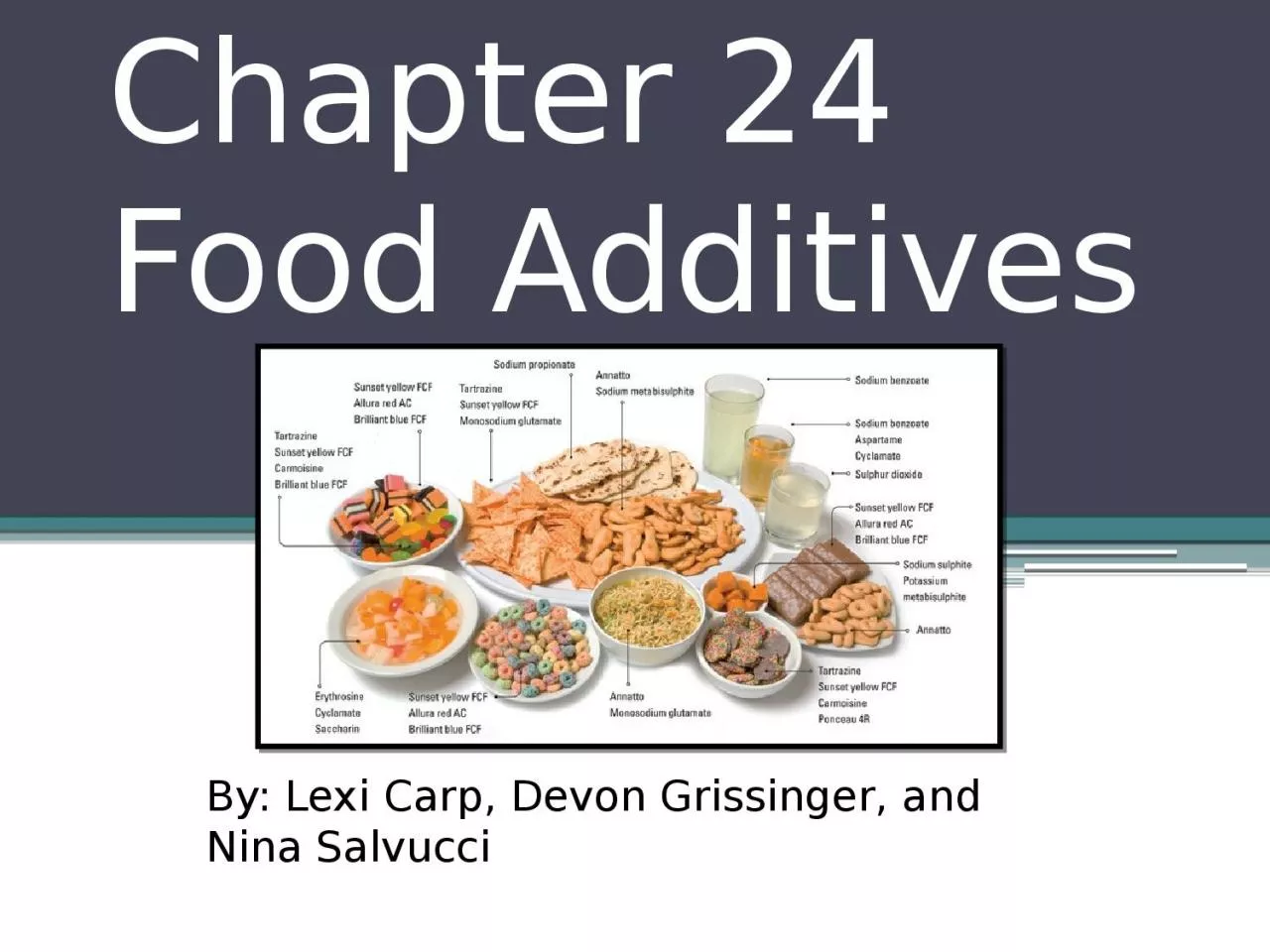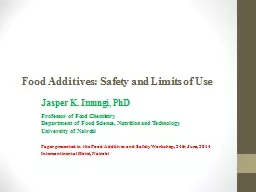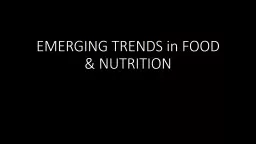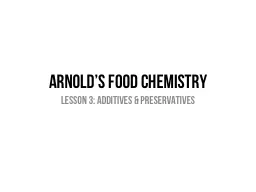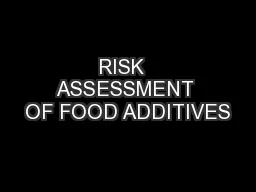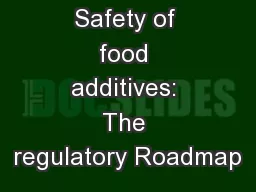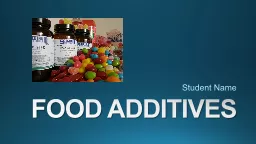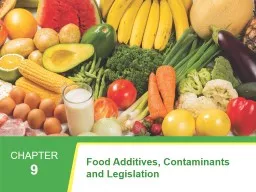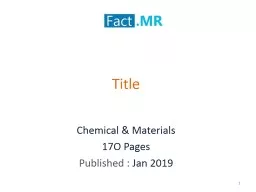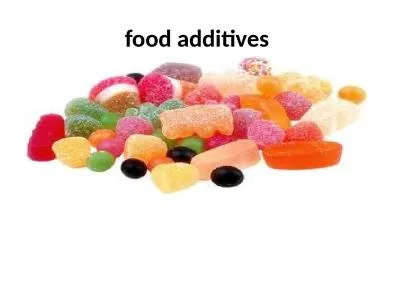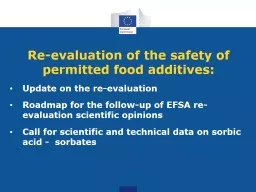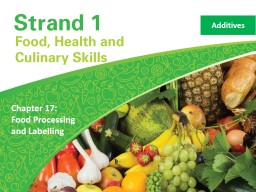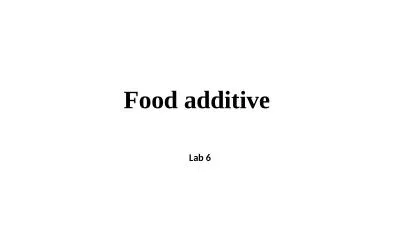PPT-Chapter 24 Food Additives
Author : phoebe | Published Date : 2024-01-03
By Lexi Carp Devon Grissinger and Nina Salvucci Objectives and Vocabulary Objectives Identify common food additives and their uses Compare natural and synthetic
Presentation Embed Code
Download Presentation
Download Presentation The PPT/PDF document "Chapter 24 Food Additives" is the property of its rightful owner. Permission is granted to download and print the materials on this website for personal, non-commercial use only, and to display it on your personal computer provided you do not modify the materials and that you retain all copyright notices contained in the materials. By downloading content from our website, you accept the terms of this agreement.
Chapter 24 Food Additives: Transcript
Download Rules Of Document
"Chapter 24 Food Additives"The content belongs to its owner. You may download and print it for personal use, without modification, and keep all copyright notices. By downloading, you agree to these terms.
Related Documents

